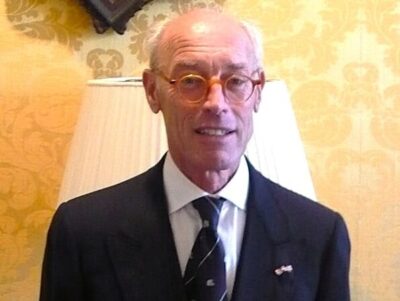Pieter Biesboer passed away on 23 May 2025.

photo via Jane123, Wikipedia
After studying art history at the University of Amsterdam, Pieter earned his PhD at Bryn Mawr College near Philadelphia in the United States in 1972 after completing his dissertation on Cornelis Vroom. Pieter first served as curator at the Prinsenhof in Delft from 1973 to 1976. He then became Curator of Old Masters at the Frans Hals Museum, a position he held for 33 years. On his retirement in 2008, he received the Medal of Merit from the municipality of Haarlem for his numerous contributions to the city and its cultural history.
At the Frans Hals Museum, he was the curator or co-curator of significant exhibitions on Frans Hals (1989), Judith Leyster (1993), Jacob van Ruisdael (2004), Pieter Claesz (2004), and the De Bray family of painters (2008), among others. Pieter’s contributions touched on most major artists working in Haarlem in the seventeenth century. His final exhibition, De Gouden Eeuw begint in Haarlem, provided a summation on the foundational role Haarlem played in the cultural development of the young Dutch Republic. In these various projects Pieter collaborated with a wide range of colleagues on both sides of the Atlantic. His shows had accompanying catalogues that not only documented these exhibitions, but also offered new scholarship.
Ever the scholar, in 2001, Pieter published Collections of paintings in Haarlem, 1572-1745, with Carol Togneri. This remains an indispensable work on the inventories in Haarlem and the art collections documented within them. Later, Pieter worked to make this research available in the Getty Provenance Index where it continues to offer a widely accessible and unrivalled resource on the city of Haarlem, collecting practices, and the local art market.
Following his retirement, Pieter continued to devote himself to scholarship. In 2020 he published Delfts Zilver. Delftse goud- en zilversmeden en hun merken 1536-1807. This work was inspired by his early career in Delft and represents the definitive study on the subject. Pieter also continued to research Frans Hals, including an informative essay for Frans Hals. Iconography-Technique-Reputation that was published only late last year. Pieter’s extensive list of exhibitions and publications attest to his erudition, and the remarkable breadth of his knowledge.
Pieter was gracious and genteel, inquisitive and studious. From the first time I met Pieter in 2001 he was always warm and welcoming. When I was living in the Netherlands conducting my dissertation research we had a standing appointment on Friday mornings in Haarlem during which we would chat over coffee. He generously shared then unpublished research on Haarlem inventories. He helped me understand how Hals painted, by looking at the treasures of the Frans Hals Museum together. I cherish the memories of those meetings and the knowledge that he shared. I will always be grateful that he took the time, so much time, to meet with me, especially as a student and aspiring scholar. As fellow lovers of Frans Hals we remained in touch over the years that followed. He stands not only as a model of how to be a scholar-curator, but also of how to support the generations of scholars that follow.
Christopher D.M. Atkins
Van Otterloo-Weatherbie Director of the Center for Netherlandish Art at the Museum of Fine Arts, Boston.